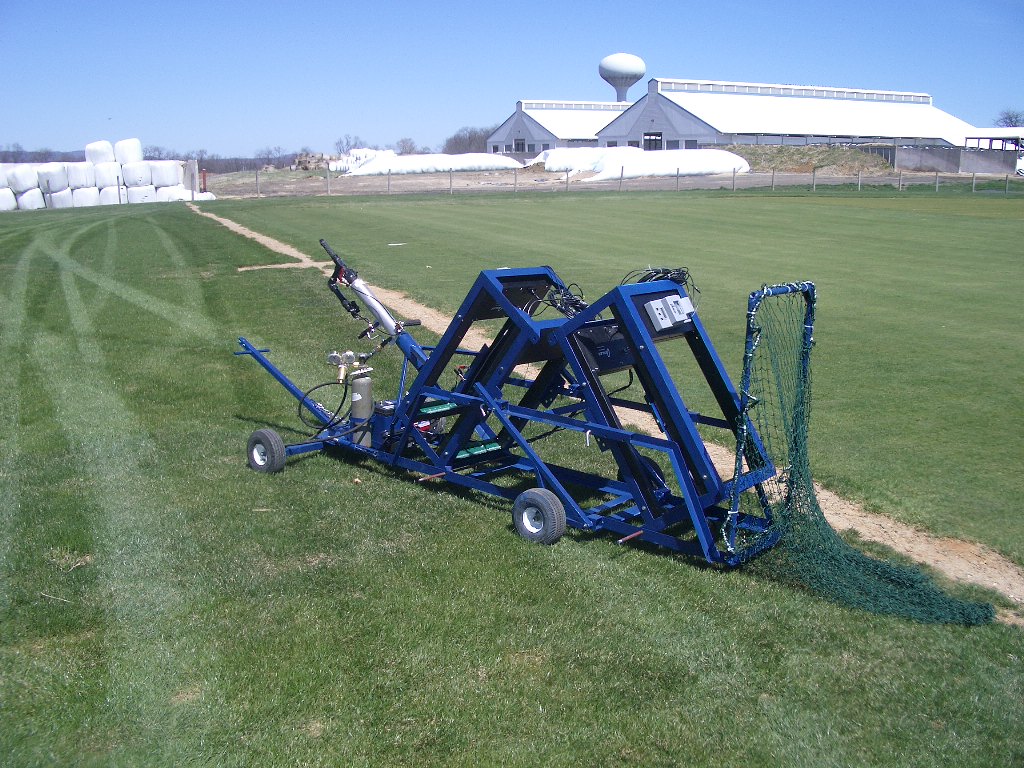
During a baseball game, balls strike the playing surface at variety of speeds and angles. The speed at which the ball moves forward, after impact with the playing surface, has been called the pace of the surface. Pace is closely related to the amount of energy that is returned to the ball after surface impact. Surfaces with excessive pace can jeopardize player safety while those with extremely slow pace can change the strategy of the game. An apparatus was developed to quantify ball bounce by measuring the coefficient of restitution (COR) for a playing surface. COR is defined as the ratio of a baseball's velocity after impact with the surface as a proportion of its velocity prior to impact. The apparatus uses infrared chronographs placed twelve inches from the testing surface in an arrangement to obtain the inbound and outbound velocities of baseballs propelled at varying speeds and angles to the surface. COR was measured on a variety of surfaces for each combination of three speeds and three impact angles. Highly significant differences occurred between surfaces (p < 0.001) and impact angles (p = 0.03). Pace was highest on skinned infield surfaces (COR= 0.598), lowest on natural turfgrass surfaces (COR = 0.378) with infilled synthetic turf surfaces being intermediate. No significant COR differences were found between traditional and infilled synthetic turf surfaces.

See more of Graduate Student Oral Competition: Breeding, Fertility, Environment, and Management
See more of C05 Turfgrass Science
See more of The ASA-CSSA-SSSA International Annual Meetings (November 6-10, 2005)